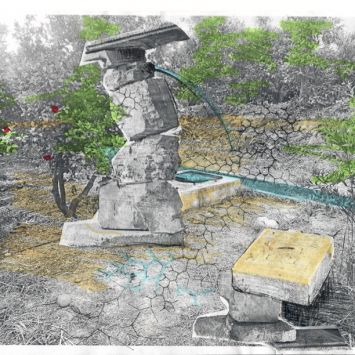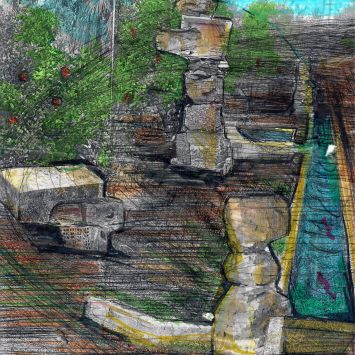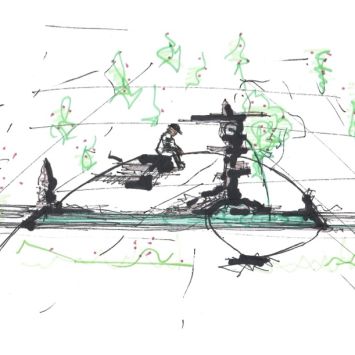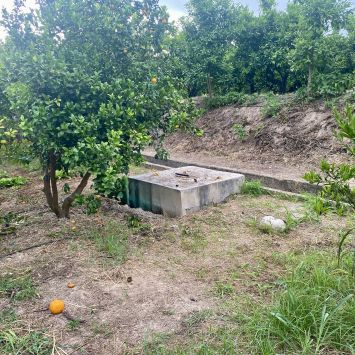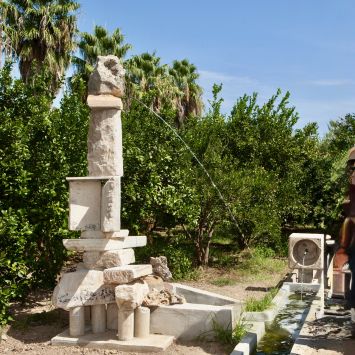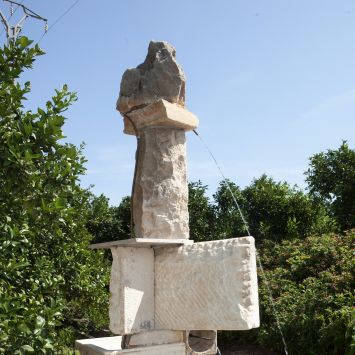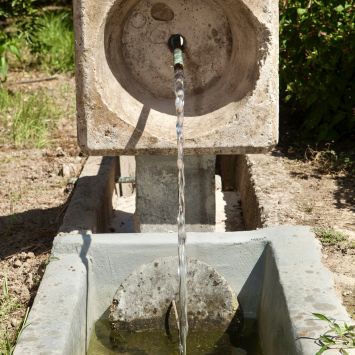Fountain Citrus Deliciosa, 2025
Title: Fountain Citrus Deliciosa, 2025
Artist: Jorge Peris (Alzira, 1969)
Materials: stone, cement, copper, hydraulic system, water, Citrus deliciosa
Dimensions: 10 × 6 × 3 meters
Executed by: Obres Leal S.L.U.
Collection Todolí Citrus Fundació
Donated by the artist
The Citrus deliciosa is a highly aromatic, sweet, and juicy mandarin variety, whose tree is characterized by thinner and more elongated leaves than those of other mandarins.
This variety gives its name to Fountain Citrus Deliciosa, a work by the artist Jorge Peris (Alzira, 1969), recently donated to Todolí Citrus Fundació, and now part of the Foundation’s permanent collection.
Peris chose as its site a small, disused irrigation pond next to an abandoned section of a traditional water channel, integrating these existing elements into a new circulation of water. In doing so, he restores the memory of the traditional irrigation system, creating a space for contemplation and leisure.
Conceived as a set of interrelated elements, the work includes: a totem from which a jet of water springs, a small pond 1.70 m deep, a short canal, a bench, and more. It is defined by the surrounding landscape, following the geometry of the golden spiral and embracing a Citrus deliciosa tree within its composition.
In its construction, Peris uses leftover building materials, abandoned stones, and debris gathered from the surrounding area. These elements are juxtaposed in what might appear to be an improvised composition, forming a center that evokes the presence of a megalithic dolmen.
It is a place that invites one to sit, listen to the sound of falling water and birdsong, breathe in the aroma of mandarins, and experience the serenity of the environment.
Peris’s artistic practice is deeply connected to memory, landscape, and experimentation. His site-specific installations explore the relationship between spaces, humble materials, time, autobiographical traces, interdisciplinary collaborations, and the constant tension between fragility and permanence.
This work continues that line of inquiry, while also adding a living dimension of agricultural landscape, social memory, and inhabited nature.

